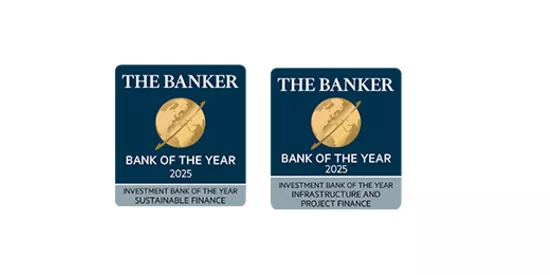
Debt Capital Markets: 2016 Review and 2017 Forecast
Year-end report from SG CIB Debt Capital Markets and Syndicate Teams.
Find more about the International Debt Capital Markets trends in 2016 and forecasts for 2017 across Bonds, Loans, Hybrids, Securitisation and Liability Management markets.
_ Download the full report in PDF
Executive Summary
"ARE YOU TRYING TO MANIPULATE ME? IT'S WORKING."
Bridget Moynahan
 2016 has been another outstanding year for debt capital markets, with new records set particularly in EUR-denominated corporate issuance, and in USD-denominated issuance from financial institutions. In the EUR market, new boundaries were conquered in negative yields (up to 12 years on the German Bund curve) as well as in long-dated issuance, as illustrated by the debut 70 year benchmark issue launched by the Republic of Austria in October.
2016 has been another outstanding year for debt capital markets, with new records set particularly in EUR-denominated corporate issuance, and in USD-denominated issuance from financial institutions. In the EUR market, new boundaries were conquered in negative yields (up to 12 years on the German Bund curve) as well as in long-dated issuance, as illustrated by the debut 70 year benchmark issue launched by the Republic of Austria in October.
It has also been a difficult year to navigate, with many bursts of volatility fuelled by macro-economic shocks, monetary policy speculation and political uncertainties. In addition, financial issuers had to adjust to increasing capital requirements, persistent litigation risks, and regulatory uncertainty.
This extreme volatility is best reflected in the high-yield market, with most of the issuance concentrated to only five months (March-May and September-October). Emerging markets had a difficult start to the year as well, but became more attractive after the "Brexit" vote. Last but not least, corporate hybrid EUR volumes dropped by two thirds in 2016, paying the price of volatility as well as their non-eligibility to the European Central Bank's Corporate Sector Purchasing Programme (CSPP) announced in March 2016.
This combination of ultra-low rates, ongoing volatility and record volumes was already a driving theme in 2015. What makes 2016 different is that more than in any previous year, market participants have had to constantly revise their ability to anticipate market developments.
The unprecedented volatility at the beginning of the year, usually an excellent window used by frequent issuers to front-load their funding programme, caused the European corporate and high-yield markets to remain virtually muted until March. Although less affected by volatility, Sovereign issuers have also spread out their funding programme more evenly along the year.
The events that surprised market participants the most were of course the Brexit vote in June, the outcome of the US presidential elections in November and, more specifically, the unexpected dynamic of the financial markets in the days and weeks immediately following these headlines.
By further extending the scope of its quantitative easing programme in March 2016, the ECB has managed to manipulate market resilience and funding costs for European issuers. This has allowed borrowers, such as KFW and EIB, to attract multi-billion orderbooks from investors competing to invest at fixed negative yields in EUR for up to 7 years. But it also made financial markets more unpredictable as participants increasingly shift their focus to the potential tapering of quantitative easing in the eurozone.
2017 will be difficult to read, as the sentiment around interest rates and inflation seems to be reversing, notwithstanding the heavy political calendar and monetary policy potential adjustments. More than ever, identifying and seizing the first windows on offer at the start of the year may be a game changer for potential issuers.




